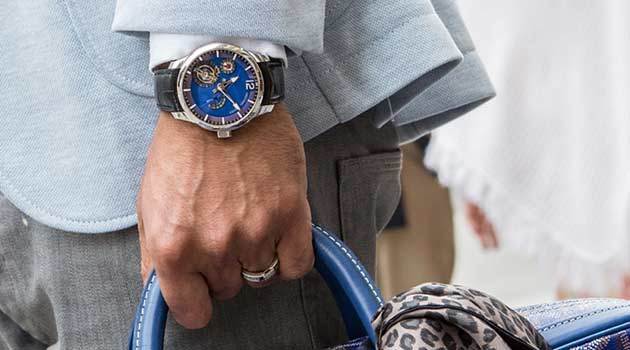Watch Out, Rolex: Japan Takes On Swiss in Bid for Wealthy Wrists

In a factory surrounded by snow-covered peaks, technicians in lab coats use tweezers to assemble tiny metal parts into self-winding watches.
Once they’ve been checked through microscopes for precision and packed in satin-lined boxes, the timepieces are shipped off to Rodeo Drive or Knightsbridge boutiques, where they’ll sell for thousands of dollars.
This is Japan, not Switzerland.
Forty years after nearly wiping out the Swiss watch industry with cheap quartz models, Japanese brands like Seiko and Citizen are eyeing the high end of timekeeping that’s been the Alpine country’s turf. New boutiques in posh Beverly Hills and London shopping districts show off models like a Grand Seiko with an eight-day power reserve — and a $58,000 price tag.
“We won’t see much growth in the lower-end price points, so it’s only natural we start to shift more towards mid- and high-end,” Seiko Watch Co. President Shuji Takahashi said in an interview in Tokyo.
The Japanese push upmarket shows how Apple Inc. has turned timekeeping upside down. Only three years after entering the market, the tech giant has become the world’s biggest watch seller, overtaking Rolex, forcing the industry to rethink strategy. As Swiss brands add more accessibly priced models, Seiko and Citizen are seeking a bigger piece of the premium action.
The Japanese success in marketing quartz watches drove many Swiss makers of mechanical timepieces to their knees, turning Seiko into the industry’s giant in the late 1970s. But Japanese manufacturers missed out on the subsequent revival in demand for luxury mechanical watches, which attract buyers with the craftsmanship behind a product that runs without batteries.
Grand Seiko watches are known for their accuracy and have simpler dials and a more classic style than regular Seikos. The company makes fewer than 100,000 Grand Seikos a year, roughly equal to IWC’s output but well behind Rolex’s 800,000, according to estimates by Bank Vontobel’s Rene Weber.
“The Grand Seiko is a serious competitor” to brands like Richemont’s Jaeger-LeCoultre and IWC, said James Dowling, co-author of ‘The Best of Time: Rolex Wristwatches.’” “It’s starting to eat at their client base.”
Seiko was founded in 1881 by Kintaro Hattori, a watch repairman who at age 21 began selling and fixing clocks. About a decade later, he built a factory in Tokyo. After recovering from bombings during World War II, the company pushed ahead in watchmaking and in 1969 introduced the battery-powered Seiko Quartz Astron, which started the quartz revolution.
Courtesy : Bloomberg , hellominna-wordpress.com
[social_warfare buttons=”Facebook,Pinterest,LinkedIn,Twitter,Total”]



